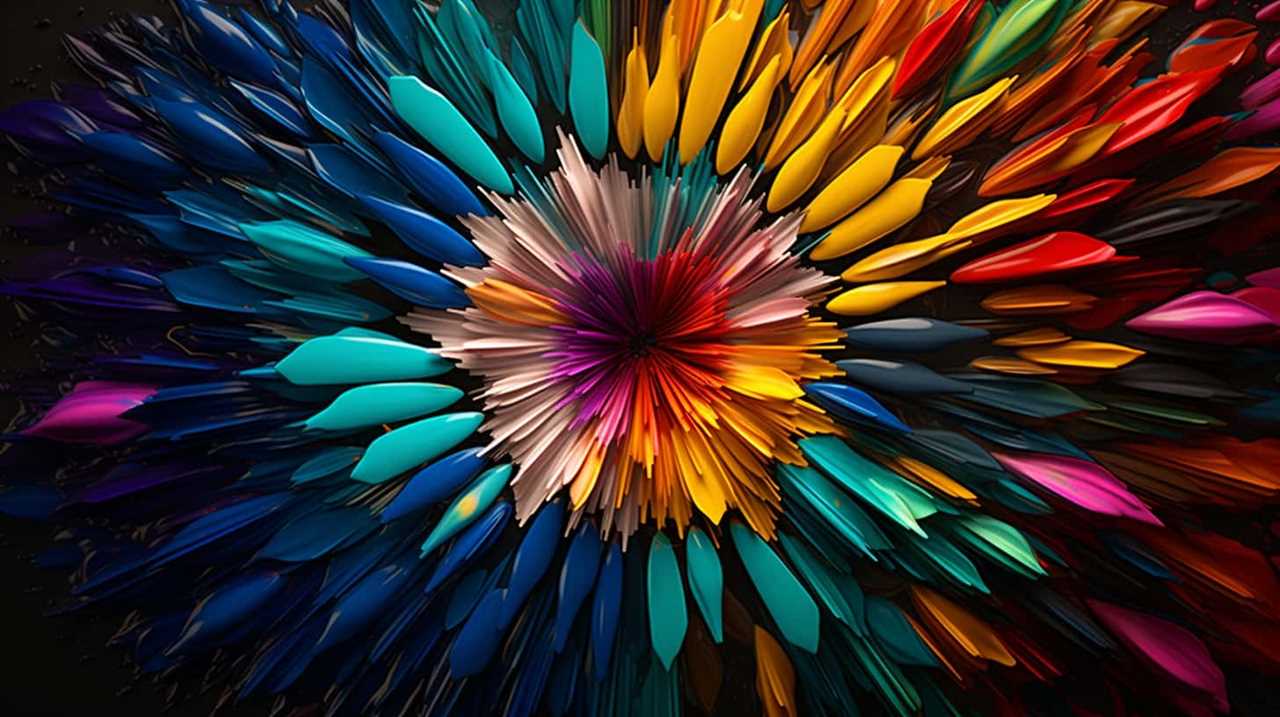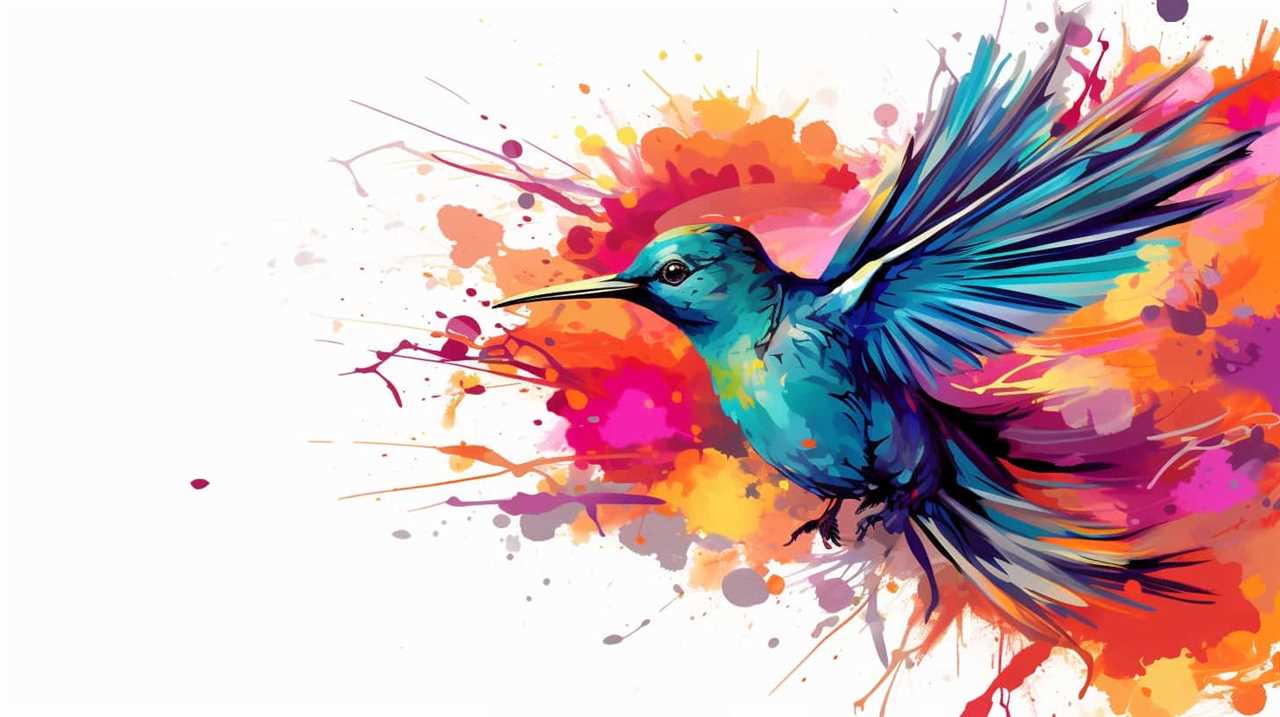Have you ever thought about the connection between the vibrant colors in a painting and the boundless creativity of the artist?
Like the blending of watercolors on a canvas, creativity and aesthetic beauty in art are intertwined in a mesmerizing dance.
In this exploration, we will delve into the intricate relationship between artistic creativity and the allure of aesthetic beauty. Prepare to embark on a journey that will challenge your preconceived notions and ignite your innovative spirit.
We will unravel the definition of aesthetic beauty, examine the role of emotion and culture, and delve into the impact of personal perspective and skill.
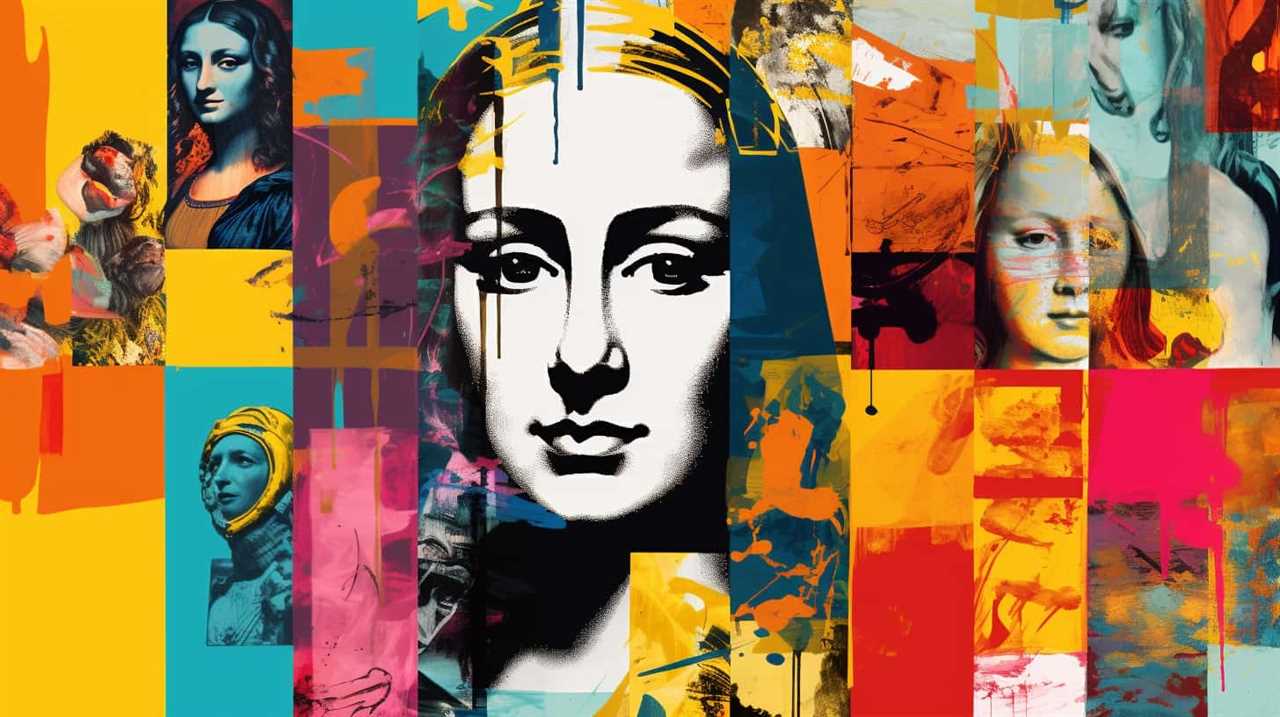
Get ready to unlock the secrets behind the captivating connection between creativity and aesthetic beauty in the world of art.
Key Takeaways
- Aesthetic beauty in art is subjective and influenced by individual perception, cultural background, and personal experiences.
- Creativity is closely tied to self-expression and the unique perspective of the artist.
- Cultural context plays a significant role in artistic expression and creativity.
- Artistic innovation and experimentation contribute to the evolution of art and the exploration of new ideas and techniques.
The Definition of Aesthetic Beauty
To understand the concept of aesthetic beauty, you need to delve into the interplay between creativity and artistic expression. Aesthetic beauty is a subjective experience that’s influenced by individual perception. It encompasses both the visual appeal and the emotional resonance of a work of art. Beauty isn’t an inherent quality of an object or artwork, but rather a psychological response that’s shaped by our cultural background, personal experiences, and emotional state.
Perception plays a crucial role in our understanding and appreciation of beauty. It’s through our senses that we perceive the visual elements of an artwork, such as color, form, and composition. These sensory stimuli are processed by our brain, which then interprets and assigns meaning to them. Our perception of beauty is influenced by various factors, including familiarity, novelty, and symmetry. For example, we tend to find familiar and symmetrical objects more aesthetically pleasing, as they provide a sense of order and balance.
The psychological aspects of aesthetic beauty further enhance our experience of art. When we encounter a visually striking artwork, it elicits emotional responses within us. These emotions can range from awe and wonder to joy and sadness. Art has the power to evoke deep and complex emotions that resonate with our own personal experiences and inner thoughts. This emotional engagement with art enhances the aesthetic experience, making it more meaningful and memorable.
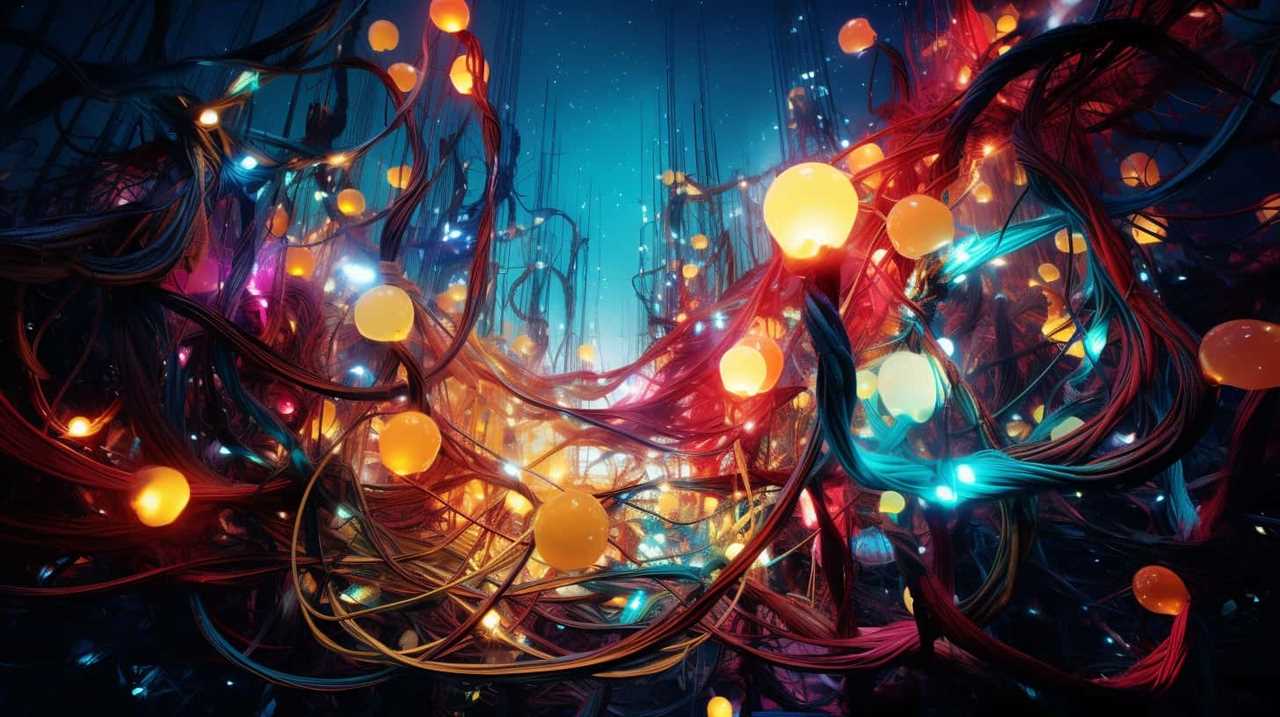
Exploring the Concept of Artistic Creativity
When exploring the concept of artistic creativity, several key points come to mind.
Firstly, creativity is closely tied to self-expression, as artists use their imagination and unique perspective to create something original and personal.
Additionally, the cultural context in which an artist exists plays a significant role in shaping their creative output, as it influences their beliefs, values, and artistic influences.
Lastly, artistic creativity often involves a sense of innovation and experimentation, pushing the boundaries of traditional art forms and challenging societal norms.

Creativity and Self-Expression
You can explore the concept of artistic creativity by understanding how it links creativity to aesthetic beauty in art.
Creativity and self-expression are integral aspects of artistic creation, as artists use their imagination and innovative thinking to express their unique perspectives and emotions. Through their creative process, artists have the ability to convey their personal experiences and beliefs, allowing for a deeper connection between the artwork and the viewer.
Self-expression in art serves as a form of communication, allowing artists to articulate their identity and share their thoughts and feelings with the world. By embracing creativity and innovation, artists can push the boundaries of traditional art forms and create works that challenge societal norms and inspire change.
This exploration of self-expression and identity through artistic creativity ultimately contributes to the overall aesthetic beauty of art.
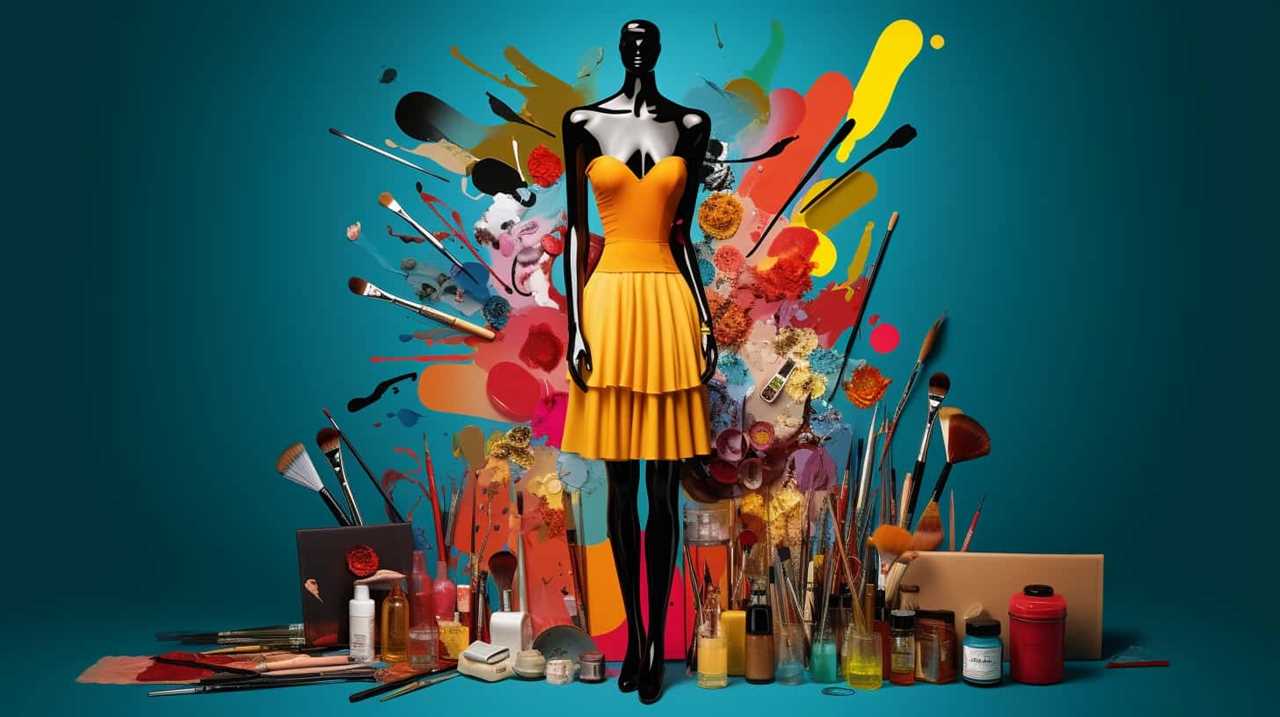
Influence of Cultural Context
Continuing from the previous subtopic, let’s explore the influence of cultural context on the concept of artistic creativity.
Cultural influence plays a significant role in shaping artistic expression and creativity. Artists are deeply influenced by their cultural backgrounds and the societies in which they exist. The cultural context provides artists with a unique lens through which they perceive the world and interpret their experiences. It shapes their artistic choices, subject matters, and styles.
Moreover, cultural diversity and cross-cultural interactions can foster innovation and inspire new forms of artistic expression. Artists who engage with different cultures and traditions are often able to create work that transcends boundaries and resonates with a global audience. This cross-cultural creativity enriches the artistic landscape and contributes to the evolution of artistic practices.
Understanding the influence of cultural context is essential in appreciating the multifaceted nature of artistic creativity.

Artistic Innovation and Experimentation
To delve into the concept of artistic creativity, it’s crucial to explore the link between creativity and aesthetic beauty in art through the lens of artistic innovation and experimentation.
Artistic innovation refers to the introduction of new ideas, techniques, or approaches in the creation of art. It’s the driving force behind the evolution of artistic practices and the emergence of new artistic movements. Artists who embrace artistic innovation are constantly pushing the boundaries of what’s considered conventional and traditional, seeking to create something unique and groundbreaking.
Experimental techniques play a key role in this process, allowing artists to explore unconventional materials, methods, and concepts. Through experimentation, artists are able to challenge established norms and create art that’s fresh, thought-provoking, and visually captivating.
The pursuit of artistic innovation and the use of experimental techniques are essential for artists who desire to create innovative and groundbreaking works of art.

The Role of Emotion in Creating Aesthetic Beauty
Your emotions play a crucial role in creating the aesthetic beauty found in art. When you experience a work of art, whether it be a painting, a sculpture, or a piece of music, it’s your emotional response that allows you to connect with the artist’s intention and experience the beauty of the piece.
The role of emotion in creating aesthetic beauty can be understood through the lens of cognitive processes and the psychological impact they have on our perception of art. Cognitive processes, such as attention, memory, and perception, are involved in the way we experience art. When you look at a painting, for example, your cognitive processes help you focus on specific details, remember previous experiences, and interpret the artwork in a meaningful way.
This cognitive engagement is fueled by your emotions, which shape how you perceive and understand the art. Furthermore, the psychological impact of art is closely tied to our emotions. Art has the power to evoke a wide range of emotions, from joy and awe to sadness and contemplation. These emotional responses contribute to the overall aesthetic experience, as they allow us to engage with the artwork on a deeper level and make it personally meaningful.
The Influence of Culture on Artistic Creativity
The influence of culture on artistic creativity is a multifaceted and complex phenomenon. Cultural impact on creativity encompasses the ways in which societal norms, values, and traditions shape an artist’s perspective and artistic expression.
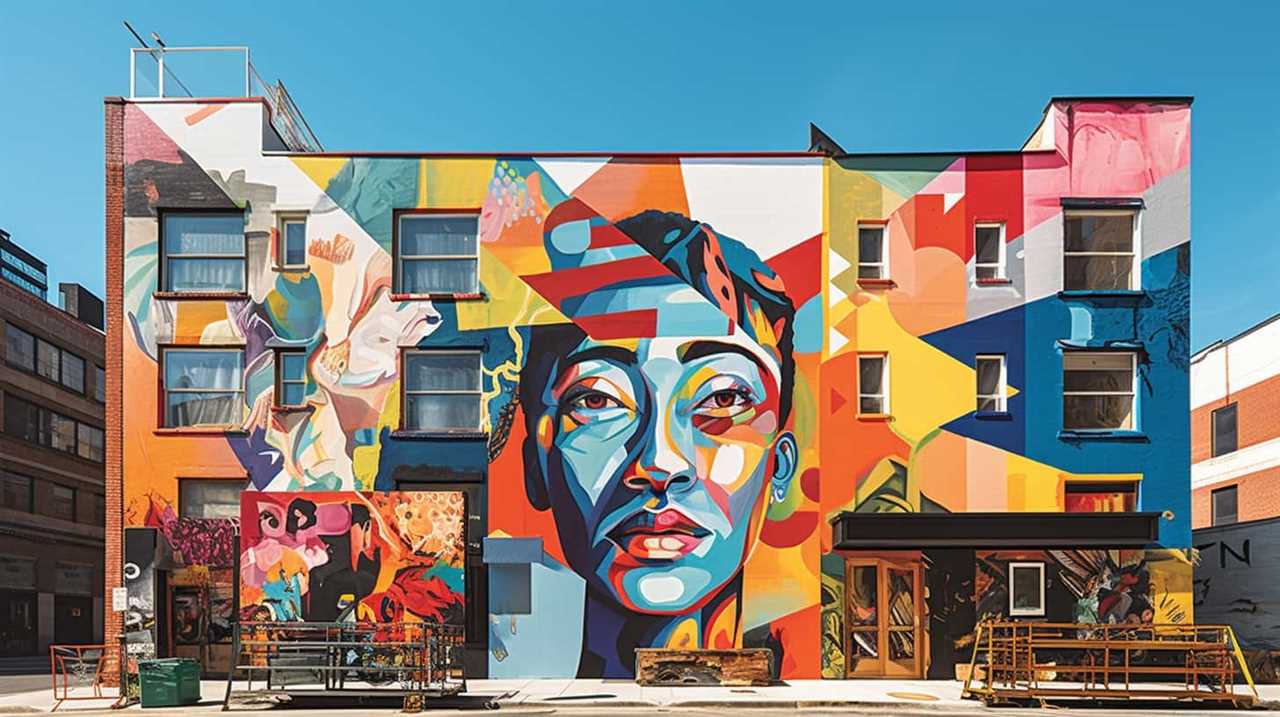
Artistic expression across cultures varies greatly, as different cultures have their own unique forms of artistic representation and aesthetics. This cultural diversity in art adds richness and depth to the creative landscape, allowing for a multitude of perspectives and narratives to be explored and appreciated.
Cultural Impact on Creativity
When considering the influence of culture on artistic creativity, it’s important to understand how different cultural backgrounds shape and inform the creative process. Cultural influence plays a significant role in shaping an artist’s perspective, ideas, and artistic techniques.
Artists are deeply influenced by their cultural heritage, traditions, and values, which are all reflected in their artworks. Historical context also plays a crucial role in shaping artistic creativity. Artists often draw inspiration from past events, social movements, and cultural shifts, which shape their artistic expressions and creative choices.
The historical context provides a framework for artists to explore and respond to societal issues and cultural phenomena. Understanding the cultural impact on creativity allows us to appreciate the diverse and rich artistic expressions across cultures. It provides insights into how different cultural perspectives contribute to the innovation and evolution of art forms, making it a fascinating subject to explore further.

Artistic Expression Across Cultures
Artists across cultures demonstrate their unique cultural influences through their artistic expressions. Artistic interpretation is greatly influenced by the cultural background of the artist, as it shapes their perception, values, and experiences.
Cross cultural influences play a significant role in shaping artistic creativity, as artists are exposed to different traditions, beliefs, and artistic styles. These influences can be seen in the choice of subject matter, use of materials and techniques, and the overall aesthetic of the artwork.
For example, artists from Eastern cultures may incorporate symbolism and calligraphy in their work, reflecting their cultural heritage and spiritual beliefs. On the other hand, artists from Western cultures may focus on individual expression and experimentation, influenced by the values of individualism and freedom.
The interaction between cultural influences and artistic creativity is a dynamic process that continuously evolves, resulting in a rich and diverse artistic landscape.

Cultural Diversity in Art
You often see cultural diversity influencing artistic creativity in various ways. Cultural exchange and cross-cultural influences play a significant role in shaping artistic expression across different societies and communities.
Artists draw inspiration from their cultural backgrounds, traditions, and experiences, infusing their work with unique perspectives and influences. The exchange of ideas and artistic techniques between cultures can lead to the emergence of new artistic styles and forms.
For example, the fusion of Western and Eastern artistic traditions in the late 19th and early 20th centuries gave birth to movements like Japonism and Orientalism. These movements incorporated elements from Japanese and Middle Eastern art into Western art, resulting in innovative and dynamic creations.
Cultural diversity in art not only enriches the artistic landscape but also promotes understanding and appreciation of different cultures, fostering a sense of unity and interconnectedness.

Examining the Connection Between Art Beauty and Aesthetics
To understand the connection between art beauty and aesthetics, it is essential to delve into the historical evolution of artistic expression. Examining art appreciation and the role of inspiration allows us to explore how artists have sought to create beauty throughout the ages.
Throughout history, artists have been inspired by a variety of sources, including nature, mythology, religion, and the human form. These sources of inspiration have shaped the aesthetic choices made by artists and have influenced the perception of beauty in art.
To illustrate this connection, we can look at the following table:
| Inspiration | Artistic Expression | Aesthetic Beauty |
|---|---|---|
| Nature | Landscape painting | Serenity |
| Mythology | Sculpture | Grandeur |
| Religion | Stained glass | Transcendence |
In each of these examples, the artists were inspired by different aspects of the world around them and sought to capture that inspiration in their work. The resulting artistic expressions evoke specific emotions and convey a sense of beauty that resonates with the viewer.

Understanding the Impact of Personal Perspective on Artistic Creativity
Exploring the influence of personal perspective on artistic creativity reveals the profound ways in which individual experiences shape the expression of aesthetic beauty in art. Your personal interpretation and subjective perception play a crucial role in the creative process, allowing you to infuse your unique experiences and emotions into your artwork. This subjectivity enables you to create art that’s deeply personal and authentic, resonating with others on a profound level.
To understand the impact of personal perspective on artistic creativity, consider the following:
- Diverse Backgrounds: Your personal background, including cultural heritage, upbringing, and life experiences, influences the way you perceive the world. This diversity of perspectives enriches the creative process, leading to a wide range of artistic expressions.
- Emotional Connection: Your subjective perception allows you to tap into your emotions and connect with your audience on an emotional level. Through your art, you can evoke different emotions and create a shared experience that transcends language and cultural barriers.
- Interpretive Freedom: Your personal interpretation of the world grants you the freedom to experiment with unconventional artistic techniques, challenge established norms, and push the boundaries of creativity. This freedom fosters innovation and encourages new perspectives in the art world.
Understanding the impact of personal perspective on artistic creativity underscores the importance of embracing individuality and celebrating diverse interpretations of aesthetic beauty. By embracing your unique perspective, you contribute to the richness and innovation of the art world.
The Relationship Between Artistic Skill and Aesthetic Beauty
Understanding the impact of personal perspective on artistic creativity provides insight into the relationship between artistic skill and aesthetic beauty. Artistic skill refers to the technical proficiency and abilities of an artist, while aesthetic beauty pertains to the visual appeal and emotional resonance of a piece of art. The connection between these two concepts is complex and multifaceted.
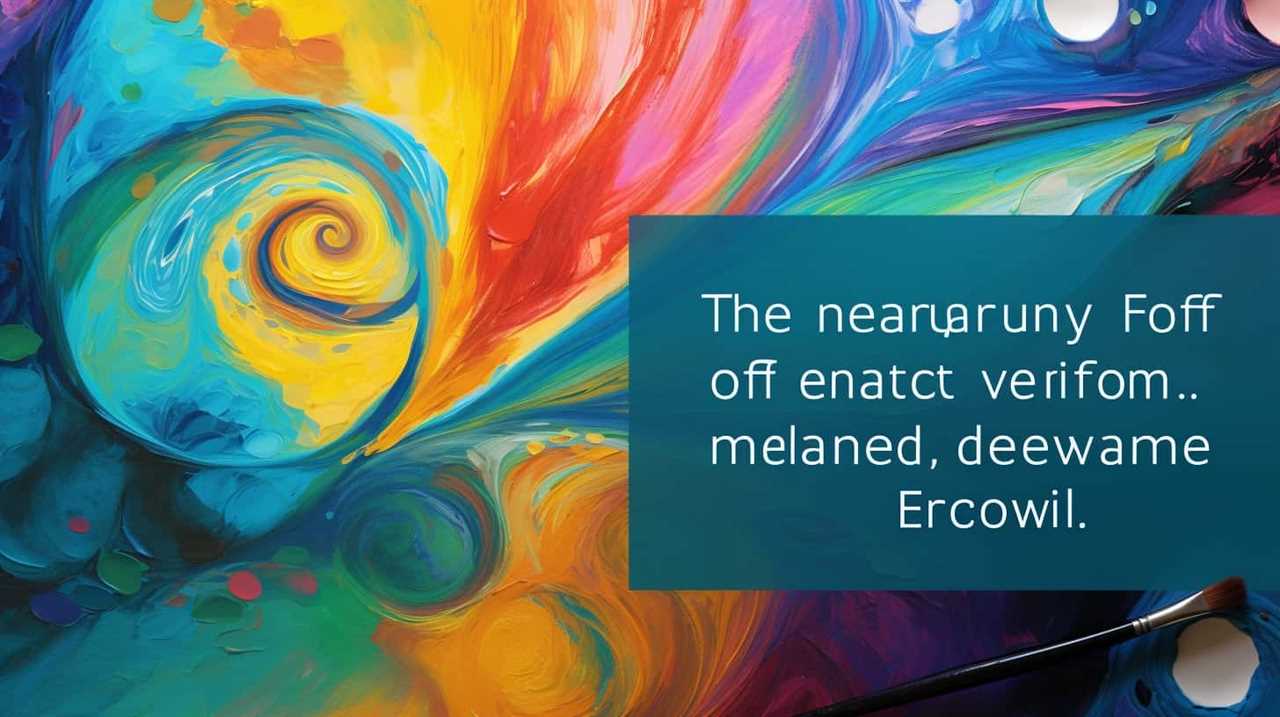
Artistic talent is a key factor in the creation of aesthetically beautiful art. It encompasses the ability to use various techniques, such as composition, color theory, brushwork, and perspective, to effectively convey the artist’s vision. The mastery of these skills allows artists to manipulate elements and principles of design in ways that captivate and engage the viewer.
However, artistic skill alone is not sufficient to achieve aesthetic beauty. Artistic expression, which involves the artist’s unique perspective, emotions, and creativity, plays a crucial role in imbuing a work of art with depth and meaning. It is through artistic expression that artists are able to infuse their personal experiences, thoughts, and feelings into their creations, resulting in art that resonates with the viewer on a deeper level.
The relationship between artistic skill and aesthetic beauty can be further illustrated through the following table:
| Artistic Skill | Aesthetic Beauty |
|---|---|
| Technical proficiency | Visual appeal |
| Mastery of techniques | Emotional resonance |
| Manipulation of design elements | Captivating and engaging |
| Composition, color theory, brushwork, perspective | Depth and meaning |
Unleashing the Power of Imagination in Creating Artistic Beauty
Unleash the power of your imagination to create artistic beauty by harnessing the limitless possibilities of your creative mind. Imagination is a powerful tool that allows artists to tap into their unique vision and bring it to life on canvas, through sculpture, or in any other artistic medium. By unleashing your imagination, you can unlock a world of artistic beauty that knows no bounds.
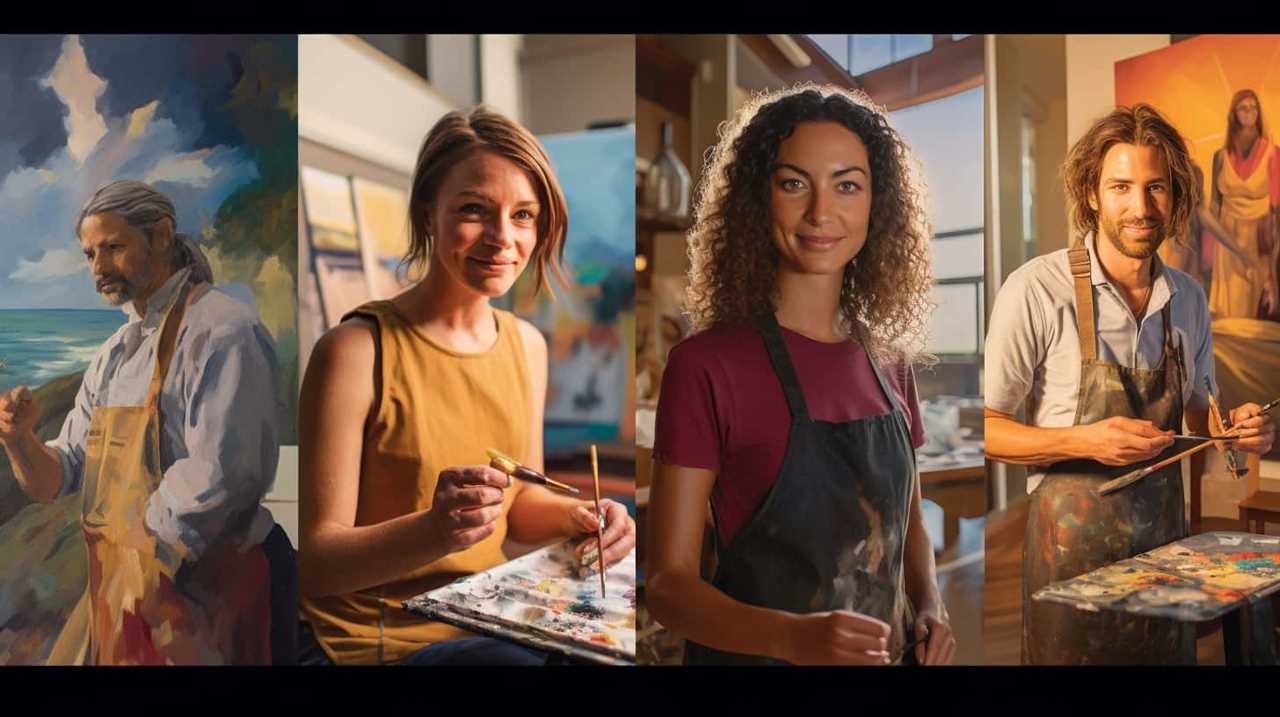
To fully embrace the power of your imagination and create artistic beauty, consider the following:
- Explore different perspectives: Imagination allows you to see the world through a different lens. Experiment with different viewpoints and challenge conventional norms to create art that’s truly unique and thought-provoking.
- Embrace experimentation: Give yourself permission to explore new techniques, mediums, and styles. Embracing experimentation allows your imagination to run wild and can result in unexpected and captivating artistic beauty.
- Find inspiration in the ordinary: Imagination can transform the mundane into something extraordinary. Look for beauty in everyday objects, emotions, or experiences and let your imagination breathe life into them.
Frequently Asked Questions
How Does Art Beauty Relate to the Concept of Aesthetic Beauty?
Artistic expression and emotional impact are key factors that link art beauty to the concept of aesthetic beauty. When artists channel their creativity to evoke emotions and create visually appealing works, they bridge the gap between creativity and aesthetic beauty.
What Factors Contribute to the Creation of Aesthetic Beauty in Art?
Factors such as skill, imagination, and inspiration contribute to the creation of aesthetic beauty in art. Artistic creativity, like a river flowing freely, merges with these factors to produce captivating and visually pleasing works of art.
How Does Cultural Background Influence Artistic Creativity?
Your cultural background significantly influences your artistic creativity. The unique perspectives, traditions, and values inherent in your culture shape the way you express yourself artistically, ultimately contributing to the creation of aesthetic beauty in art.

Is Artistic Skill Necessary for Achieving Aesthetic Beauty in Art?
Artistic skill, honed through practice and technique, is a crucial element in achieving aesthetic beauty in art. However, it is the intuitive expression of creativity that truly links the two, allowing for innovative and captivating works to be created.
How Does Personal Perspective Affect the Creative Process in Art?
Your personal interpretation shapes the artistic expression. Like a palette of colors, your perspective adds depth and uniqueness to your work. Embrace your creativity and let it guide you towards creating aesthetically beautiful art.
Can Aesthetic Beauty Enhance the Creative Process in Art?
Aesthetic beauty plays a crucial role in enhancing creativity in art. The visual appeal and emotional impact of a beautiful piece can inspire and fuel the imagination of artists, leading to more innovative and expressive works. Ultimately, beauty and creativity in art are closely intertwined, influencing and enriching each other.
Conclusion
In conclusion, the intricate dance between creativity and aesthetic beauty in art is akin to a symphony of colors, shapes, and emotions.
Like a master conductor, the artist uses their imagination to weave together threads of inspiration, cultural influences, and personal perspective, creating a tapestry that captivates the viewer’s senses.

With each stroke of the brush or stroke of the pen, the artist unveils a world where beauty and creativity intertwine, inviting us to explore the depths of our own imagination and embrace the power of artistic expression.
Joy, as our Editor in Chief, ensures the highest standard of content. Her talent in writing is complemented by her attention to detail and passion for literature and culture. Joy’s expertise and love for the English language shine through in her editorial work, making each piece a testament to quality and clarity.



